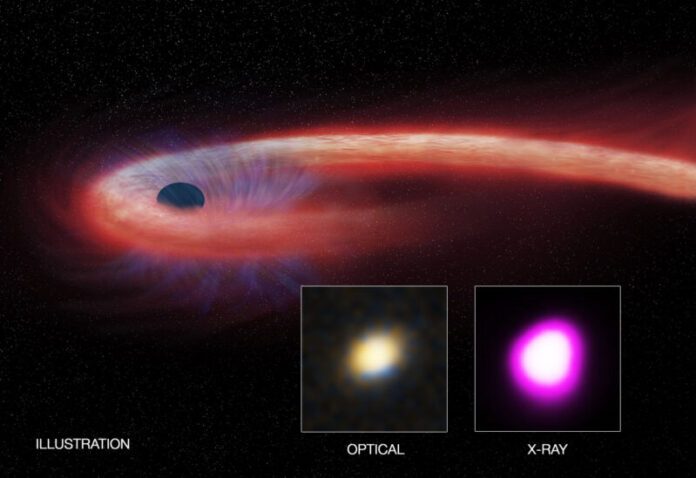
Enlarge / A model of a tidal disruption, along with some observations of one. (credit: Illustration: CXC/M. Weiss; X-ray: NASA/CXC/UNH/D. Lin et al, Optical: CFHT)
Supermassive black holes appear to be present at the core of nearly every galaxy. Every now and again, a star wanders too close to one of these monsters and experiences what's called a tidal disruption event. The black hole's gravity rips the star to shreds, resulting in a huge burst of radiation. We've observed this happening several times now.
But we don't entirely know why it happens—"it" specifically referring to the burst of radiation. After all, stars produce radiation through fusion, and the tidal disruption results in the spaghettification of the star, effectively pulling the plug on the fusion reactions. Black holes brighten when they're feeding on material, but that process doesn't look like the sudden burst of radiation from a tidal disruption event.
It turns out that we don't entirely know how the radiation is produced. There are several competing ideas, but we've not been able to figure out which one of them fits the data best. However, scientists have taken advantage of an updated software package to model a tidal disruption event and show that their improved model fits our observations pretty well.
Read 11 remaining paragraphs | Comments
Ars Technica - All contentContinue reading/original-link]




